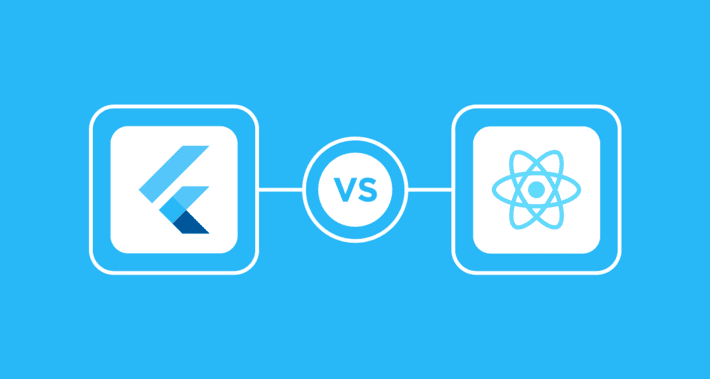
At the moment, there are a plethora of options available while choosing a cross-platform mobile app development framework. Of these, two of the most popular are Facebook’s React Native and Google’s Flutter. Perceived as staunch rivals of each other, these open-source frameworks often tend to put business owners in a fix, as they struggle to choose between the two.
While each of these frameworks comes with unique pros, neither one is without its own set of cons. So, let’s deconstruct the many features of React Native and Flutter—the good, the bad, all the way to the downright ugly.
React Native
Based on Facebook’s very own React JavaScript library, React Native primarily uses JavaScript and its extensions & updates as the programming language. Additionally, it uses React Native for web and the ReactXP libraries for web versions of apps.
Pros
While it allows the creation of apps with its UI components, they are compiled into native apps that have performance and design on par with natively built apps. The framework also includes platform-specific native components. With React Native, the published apps can be modified further, even combining React Native and native codes. Since they are published as native apps, React Native apps make for faster debugging than most hybrid apps. The Hot/Live Reloading feature in React Native lets developers view the effects of changes made to the code almost instantaneously, without needing to rebuild the project. Lastly, having been tried and tested in creating some of the most popular apps today, like Instagram, Shopify, SoundCloud, and even the Facebook app itself, the reliability and stability of React Native apps are unquestionable.
Cons
The documentation for React Native, though available in the form of a central knowledge base, is widely accepted as being quite poor. Further, with all its connectible native libraries notwithstanding, some of React Native’s readily available components still need to be modified, and yet others need to be completely rebuilt from scratch, to have them implement the intended functionality of the app. React Native also fails to fully do away with the need for platform-specific development, requiring platform-specific code in some cases, especially if the app needs to make use of device hardware like GPS or camera—somewhat defeating the purpose of cross-platform frameworks.
Flutter
Google’s Flutter is better described as a mobile app development kit, rather than just a framework. Besides its reactive framework, Flutter offers a whole host of widgets. It uses Dart as the programming language and the arm C/C++ library to compile applications for optimum native performance.
Pros
Although released only in 2017, rising enthusiasm for Flutter has resulted in exemplary community support. In addition, Flutter provides extensive documentation that enables developers to start working on it even without any prior experience with Flutter. The framework can help achieve rich and beautiful user interfaces, loaded with features. All its UI components are animation-ready. And, whenever native visual components are not displayed properly due to a lack of features, the app’s performance remains free of error—thanks to the separation of Flutter UI and native UI. Like its counterpart, Flutter is also equipped with Hot Reload.
Cons
Developed parallelly with Flutter, Dart is considered an efficient language. However, its novelty means that for a lot of developers, it’s a barrier to their adoption of Flutter. While some popular apps like Stadia and Reflect have been developed with Flutter, the lack of highly complex Flutter apps that are more mainstream tends to make it seem not-all-that reliable. Also, while Google is continually working on this, Flutter project file sizes are rather large.
React Native vs. Flutter
To determine which framework is better for a particular project, parameters like time-to-market, stability, and user-friendliness of the developed apps are good indicators. Looking at the pros and cons of both the industry heavy-weights, Flutter does come across as more advanced. However, React Native still stands as the more reliable among the two. Flutter’s advanced UI components and architecture make it a better solution for niche projects like MVPs that require quick development and rapid iterative customizations. For large-scale projects with high levels of complexity, React Native is the better option.
